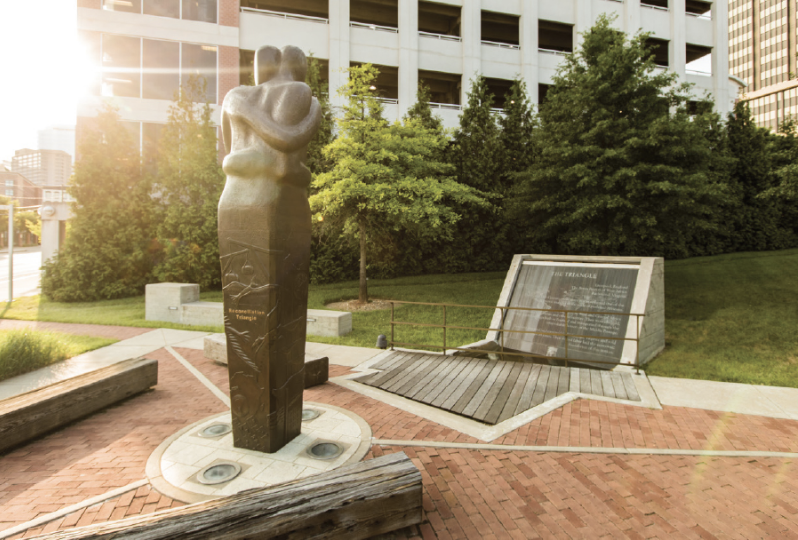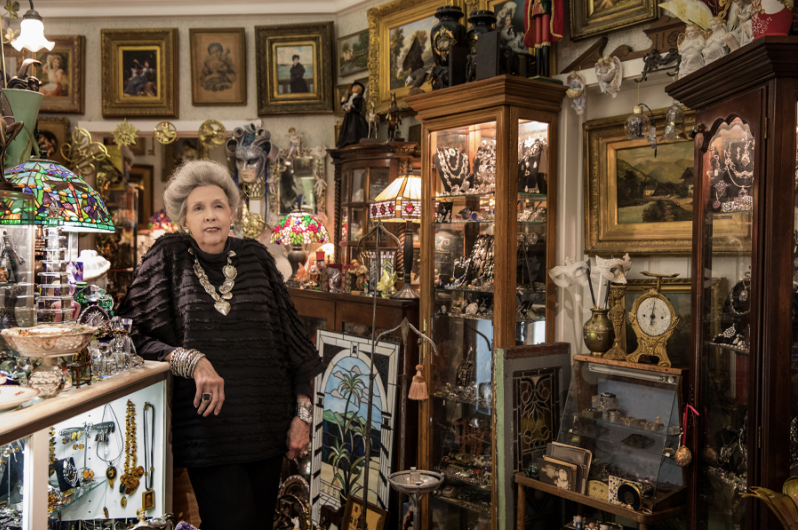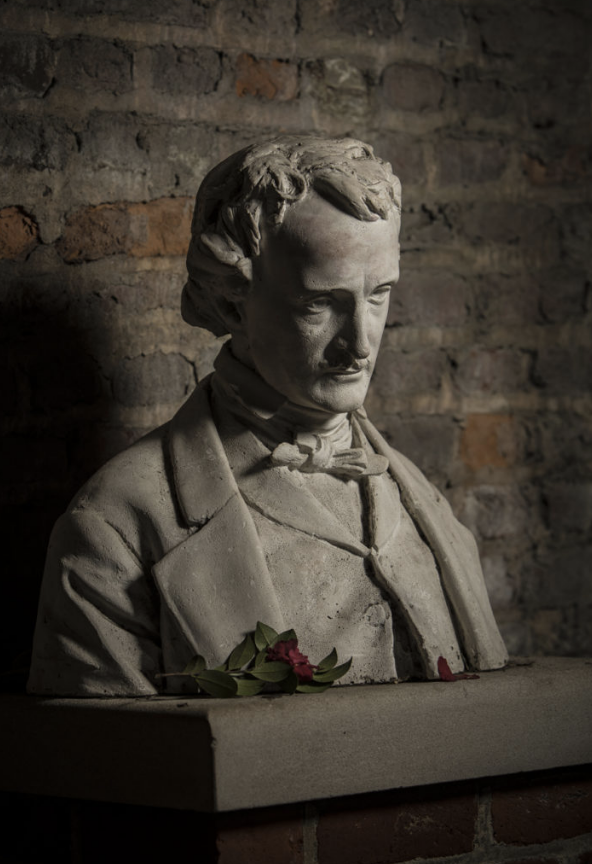Visit Virginia | Shockoe Bottom, Richmond
Once the site of bondage and commerce, Richmond’s Shockoe Bottom is now home to high-end eats and shopping.
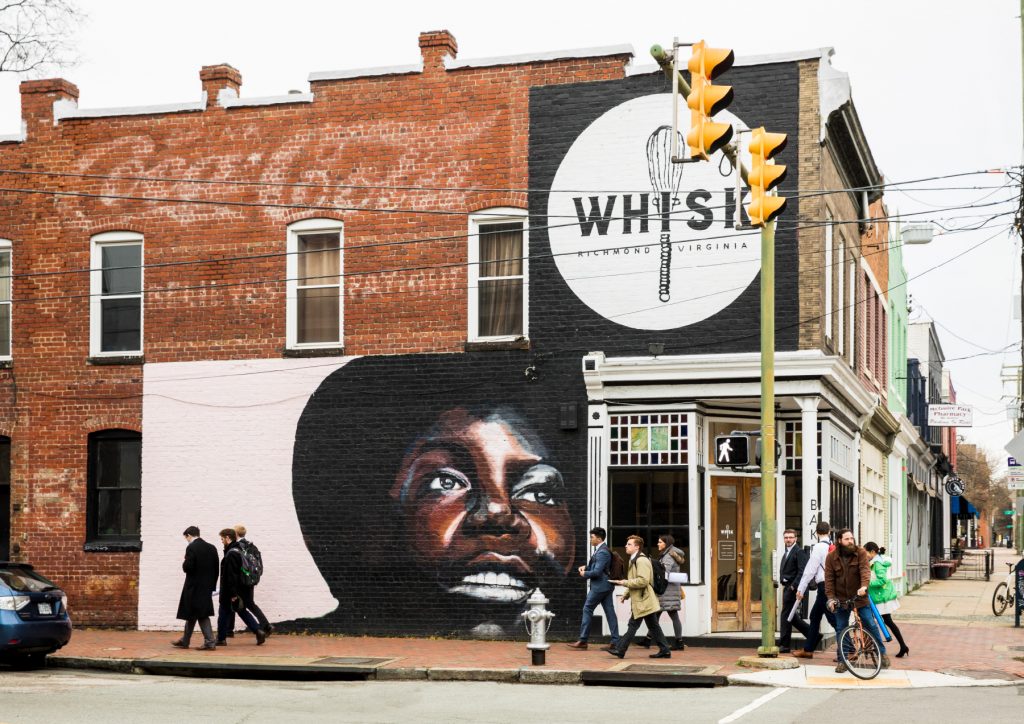
Whisk bakery and a refreshed Nina Simone mural by Ed Trask. Above, the Richmond Slavery Reconciliation Statue.
Turn your back on the shiny high rises and gleaming white Capitol building in downtown Richmond. Head downhill instead, toward the river, toward a section of town with cobblestone streets, where enslaved people once trudged in coffles on their way to the shops that prepared them for sale.
Now it’s a neighborhood of herringbone brick sidewalks and historic warehouses recast as pricey condominiums, shared work spaces and trendy restaurants.
In Shockoe Bottom you’re not just on the wrong side of the tracks, you’re under them, the trains rattling and clanking above. Beneath an interstate, too, yet somehow the vibe is industrial and charming, the shops quirky, the chefs adventurous. A row of RVA Bike Share cycles lines the paved and artfully graffitied walk along the canal. In the summer there are boat tours.
The train shed at the station that once brought in West Virginia coal to fuel the production of flour and aluminum has been renovated into a sparkling glass events space, a person-sized replica of Virginia Beach’s famed sculpture of Neptune in the entryway.
Next to it is a colorful and crowded historic farmers market, the oldest in the region. Beyond that is 17th Street, where you can find Bottoms Up Pizza, home to an array of pies from traditional to tangy Mexican to one called the Chesapeake, an impressive creation slathered in white sauce and crabmeat and sprinkled with Old Bay.
The restaurant is near the site where, in April 1865, Abraham Lincoln, his boat run aground, crossed a pedestrian bridge and came ashore with his son, Tad. They made their way through the smoldering remains of Shockoe Bottom, asking directions as they made their way to the Confederate White House, where they caught a carriage to the Capitol.
Farther up the street is a pedestrian mall, site of an ice rink in the winter and buskers in the summer, rimmed by restaurants serving Ethiopian and Thai and French food, along with Hot Chick, the name controversial, the chicken and the moonshine cosmos a contrast between salty and sweet, crispy and satisfying.
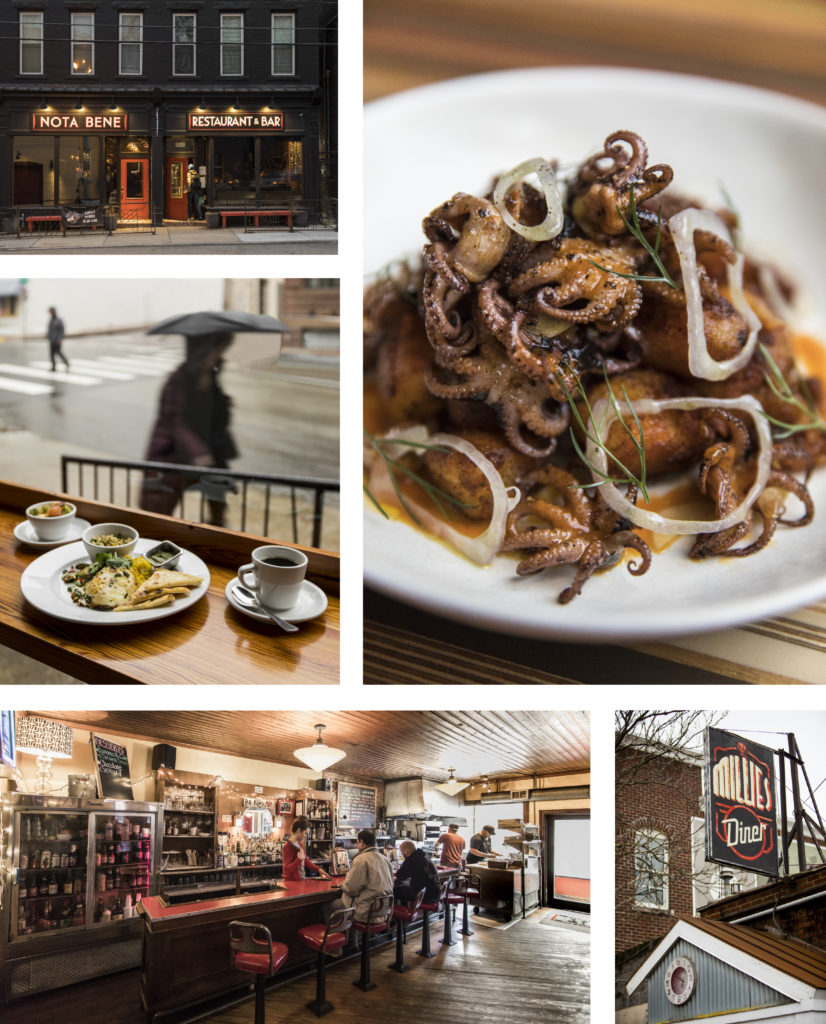
Watch the world go by, and consider past and present. Nota Bene seafood, a Citizen view,
inside at Millie’s.
Shockoe Bottom bustles with restaurants and breweries, potters’ studios and a bespoke blue jean shop where a pair of pants tops $200. It is a neighborhood once again on the rise, protected now by floodwalls that close against the surging Class IV rapids of the James River.
Here you can stop at 23rd & Main for seared tuna tacos or avocados with garbanzo beans over brown rice, or at Citizen for huevos rancheros or Disco Eggs, tossed with onions, peppers and cilantro and served over masala potatoes, the cultures and flavors blending in a narrow space with a magazine rack of old comic books and a table for playing checkers in the bathroom.
There is the Fountain Bookstore, smelling of ink and binding glue, next to the Antique Boutique and Delectable Collectibles, with sparkling glass and china and the bouffanted owner, Martha Patterson, who for more than a quarter century has sold off estates bit by bit. People squeeze into her shop from across America and Europe and say they never see anything like it anymore. “So much variety!” she says. True antiques – 100 years old or more, the colors varied and vibrant.
This is a neighborhood for wandering and shopping, but also for coming to grips with the nation’s tragic past. Enslaved humans were stored here, the strong, able-bodied men selling for between $250 and $900, the women who were destined to sleep on pallets on the floors of the rich, to clean their chamber pots and cook their food, indeed, to serve as wet nurse for their babies, for between $100 and $600.
“The trade was concentrated in Shockoe Bottom but really it was the economy of the entire city in the early part of the 19th century,” says William Martin, director of The Valentine, a museum that chronicles the history of the city. “You can’t isolate the story of Richmond’s enslaved community – it’s the entire city.”
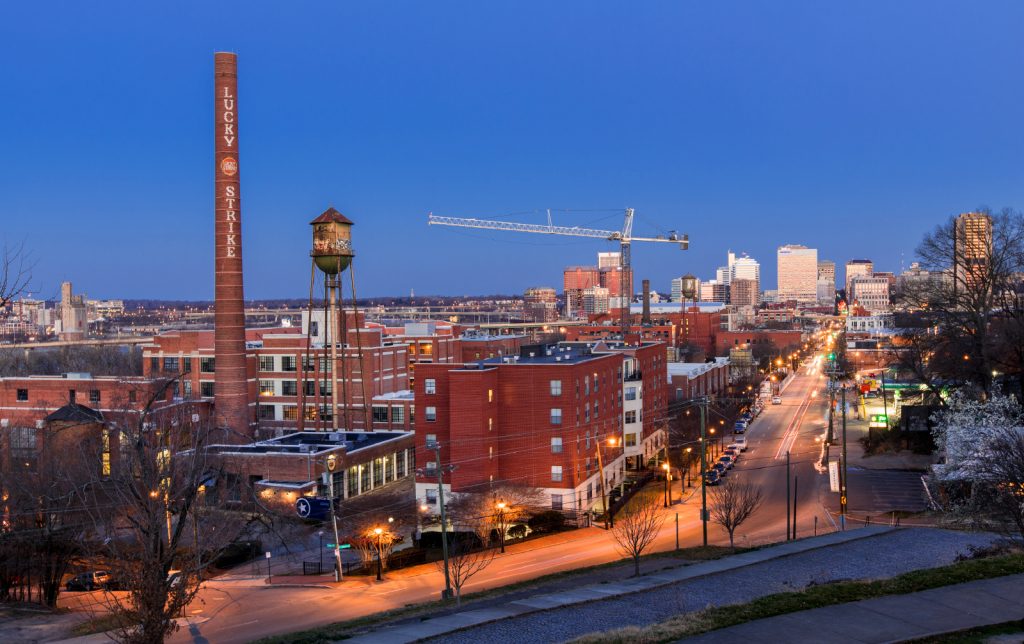
Take some time with it. Wander the Richmond Slave Trail past slave auction sites and the pens where humans were held and bred and sold. There are monuments. Not big ones like Gen. Robert E. Lee on his horse up on Monument Avenue, but one to Henry “Box” Brown, who folded himself into a shipping crate bound for Philadelphia. There’s one that depicts The Headman, his muscled arms powering the skiffs that ran up and down the canal. One planned for nearby Brown’s Island depicts chains dropping from the wrists of a man with a whip-scarred back, next to a woman holding aloft the Emancipation Proclamation.
At the corner of the old Wall Street, where tens of thousands of people were bought and sold, two stone giants embrace, symbolizing the Reconciliation Triangle trade route between England, West Africa and here. Uphill is the architectural dig of Lumpkin’s Slave Jail, known as the Devil’s Half Acre, the white owner notoriously cruel, his wife a woman of color. His widow would later lease the complex to a school that would become Virginia Union University, a historically black college.
“We have monuments to things we want to remember but we don’t have monuments to things we want to forget,” says Eric Steigleder, director of public relations and marketing at The Valentine. “Those are covered by parking lots.”
This is a place of history that deserves to be acknowledged, but it’s also a place of good food and drink and shopping. Thomas Jefferson signed the Virginia Statute for Religious Freedom here, and it’s commemorated by The Valentine First Freedom Center. There’s a museum dedicated to Edgar Allan Poe, and one to the Holocaust, the loose tiles underfoot sounding like the broken glass of Kristallnacht. But there’s also Nota Bene Restaurant & Bar, with its fabulous head of cacio e pepe-style cauliflower, roasted with garlic and lemon and cured egg, followed by wild boar pappardelle, with red wine and juniper and pickled raisins.
It’s important that we honor one, even as we enjoy the other.
Don’t miss
Stay at Courtyard by Marriott, at 14th and Cary in the heart of Shockoe Bottom.
Walk to The Richmond Slave Trail, a self-guided tour of 17 sites that chronicles the trade of enslaved Africans.
Stop by Lumpkin’s Slave Jail. The notorious Devil’s Half Acre was a holding facility and auction house.
Hang out at The Canal Walk, past murals from the first RVA Street Art Festival to the end of Brown’s Island and the Tyler Potterfield pedestrian bridge over the James.
Enjoy the Riverfront Canal Cruises, for a narrated historical tour.
Eat at 23rd & Main.

